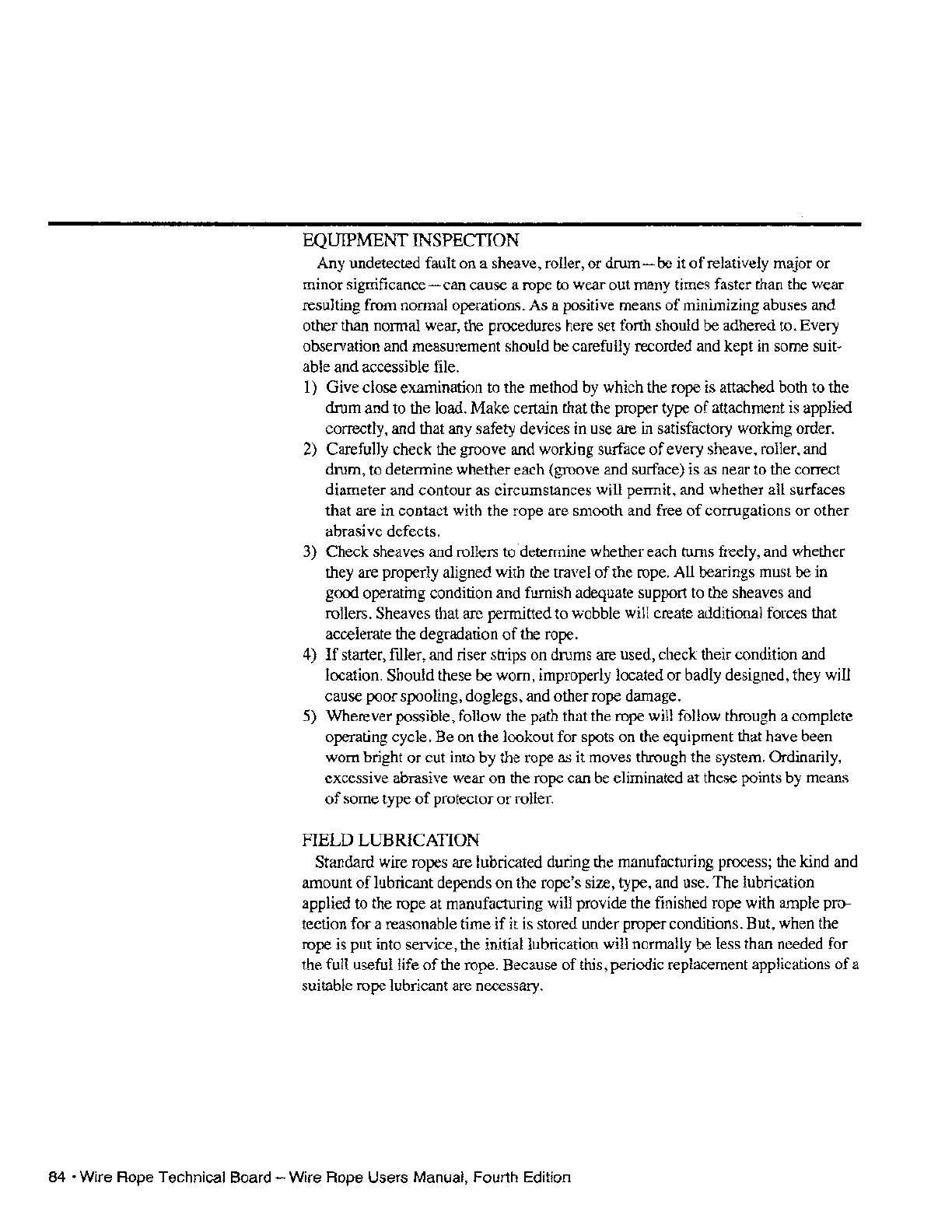EQUIPMENT INSPECTION
Any undetected fault on a sheave, roller, or
drum-be
it
of
relatively major
or
minor
significance-can
cause a rope to wear out many times faster than the wear
resulting from normal operations. As a positive means
of
minimizing abuses and
other than normal wear, the procedures here set forth should be adhered to. Every
observation and measurement should be carefully recorded and kept in some
suit-
able and accessible file.
l)
Give close examination to the method by which the rope is attached both to the
drum and to the load.
Make
certain that the proper type
of
attachment is applied
correctly, and that any safety devices in use are
in satisfactory working order.
2) Carefully check the groove and working surface
of
every sheave, roller, and
drum, to determine whether each (groove and surface) is as near to the correct
diameter and contour as circumstances will permit, and whether all surfaces
that are
in
contact with the rope are smooth and free
of
corrugations
or
other
abrasive defects.
3) Check sheaves and rollers to determine whether each turns freely, and whether
they are properly aligned with the travel
of
the rope. All bearings must be in
good operating condition and furnish adequate support to the sheaves and
rollers.
Sheaves that are permitted to wobble will create additional forces that
accelerate the degradation
of
the rope.
4)
If
starter, filler, and riser strips on drums are used, check their condition and
location.
Should these be worn, improperly located or badly designed, they will
cause poor spooling, doglegs, and other rope damage.
5) Wherever possible, follow the path that the rope will follow through a complete
operating cycle.
Be
on the lookout for spots on the equipment that have been
worn bright
or
cut into
by
the rope as
it
moves through the system. Ordinarily,
excessive abrasive wear on the rope can be eliminated at these points by means
of
some type
of
protector
or
roller.
FIELD
LUBRICATION
Standard wire ropes are lubricated during the manufacturing process; the kind and
amount
of
lubricant depends
on
the rope's size, type, and use. The lubrication
applied to the rope at manufacturing will provide the finished rope with ample pro-
tection for a reasonable time
if
it is stored under proper conditions. But, when the
rope is put into service, the initial lubrication will normally be less than needed for
the full useful life
of
the rope. Because
of
this, periodic replacement applications
of
a
suitable rope lubricant are necessary.
84'
Wire Rope Technical Board - Wire Rope Users Manual, Fourth Edition
